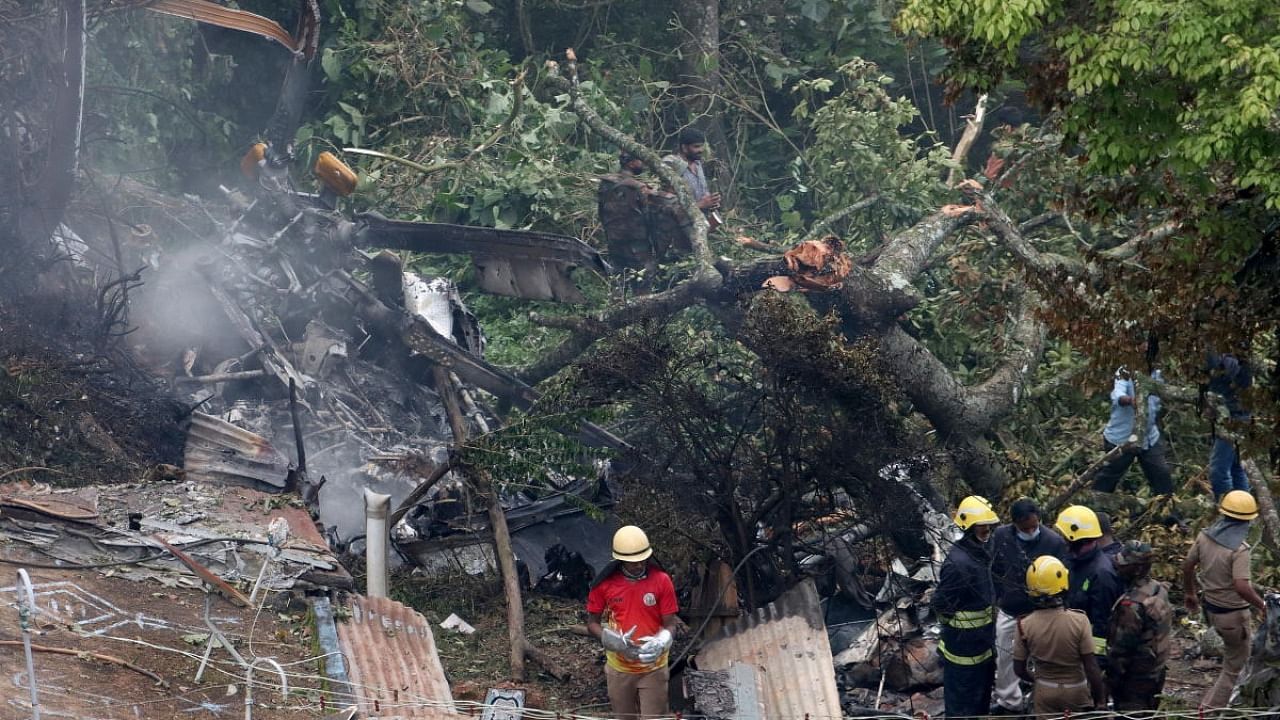
The chopper Gen Bipin Rawat was flying in on December 8 crashed because of bad weather that led to a situation called Controlled Flight into Terrain, the probe into the mishap has concluded, ruling out sabotage or technical glitch as reasons.
Gen Rawat, the first Chief of Defence Staff of the country, his wife and 12 others were killed, when the Mi-17V5 helicopter of the Indian Air Force they were flying in crashed near Coonoor in Tamil Nadu. The IAF had ordered a tri-service enquiry, which was led by Air Marshal Manvendra Singh, Air Officer Commanding-in-Chief of its Training Command headquartered in Bengaluru.
Air Marshal Singh, a leading crash investigator, on Wednesday briefed Defence Minister Rajnath Singh about the findings of the probe into the crash. Air Chief Marshal V R Chaudhari, who heads the IAF, was also present during the briefing.
The chopper took off from the IAF station in Sulur in Tamil Nadu at 11:48 am on December 8 and it was expected to land at the Defence Services Staff College in Wellington at 12:15 pm. It was flying at a low altitude and suddenly encountered thick clouds just minutes before it was scheduled to land. Wing Commander Prithvi Singh Chauhan, the commanding officer of 109 Helicopter Unit of the IAF, was the pilot in command with Squadron Leader Kuldeep Singh as the co-pilot. They decided to fly out of the cloud cover before landing and hit a cliff in the process, sources aware of the findings of the probe said.
The probe concluded that the crash took place due to “Controlled Flight into Terrain” or CFiT. The CFiT is a term coined by the engineers of Boeing in the 1970s and used since then to describe a situation, when an airworthy aircraft under control of the pilots is unintentionally flown into an obstacle, be it ground, a hill, a mountain, a cliff or a body of water. A CFiT scenario does not generally give the pilot and the co-pilot an opportunity to send out a distress call to the Air Traffic Controllers, because they remain unaware of the impending disaster till it is too late.
The pilots of the ill-fated IAF helicopter, which had Gen Rawat and others on board, also did not send out any distress call.
The Air Traffic Control at the IAF station in Sulur had lost contact with the helicopter at approximately 12:08 pm.
The local residents subsequently spotted a fire in the forest at Nanjappachatiram in Bandishola panchayat near Coonoor and rushed to the spot where they observed the wreckage of the military helicopter engulfed in flames.
Gen Rawat, his wife Madhulika Rawat and 11 others on board the helicopter succumbed to injuries before they could be rescued. Group Captain Varun Singh of the IAF was rescued alive, but he too succumbed to his injuries at a hospital in Bengaluru on December 15.
Most of the passengers and crew suffered severe burn injuries as the fuel tank of the helicopter burst due to the impact of the crash. It took days to confirm the identity of some of the deceased.
Sources aware of the findings of the probe said that the analyses of the Cockpit Voice Recorder and the Flight Data Recorder, recovered from the crash scene, did not indicate any disorientation of the pilot and the co-pilot, Wing Commander Chauhan and Squadron Leader Singh, who had been in control of the chopper till moments before it flew into terrain.
Watch latest videos by DH here:
